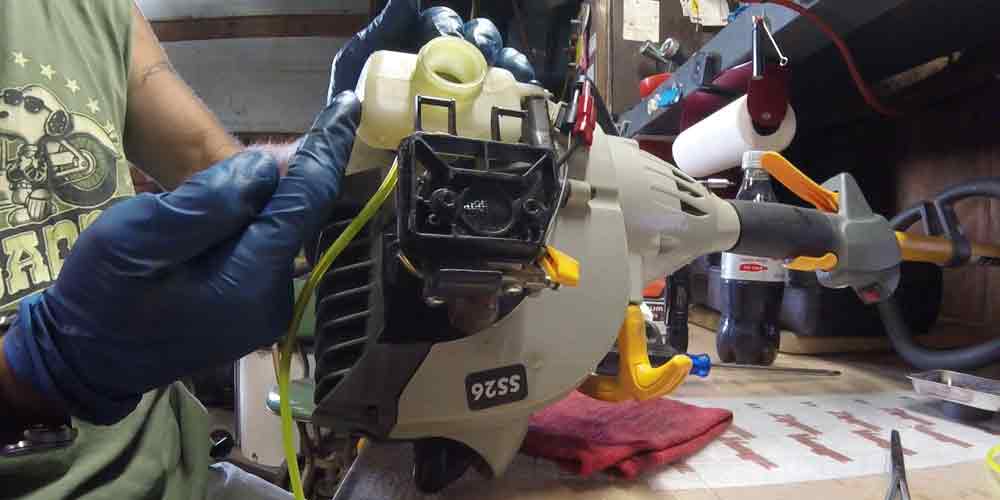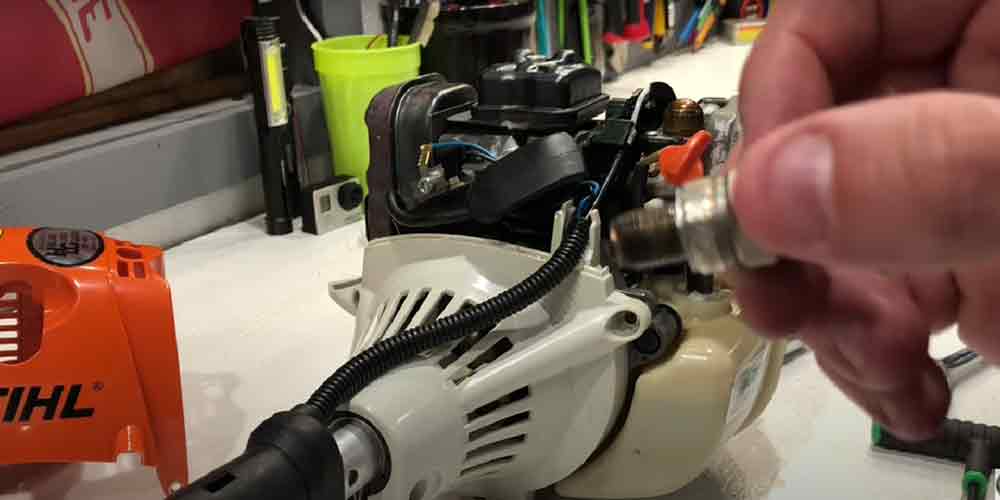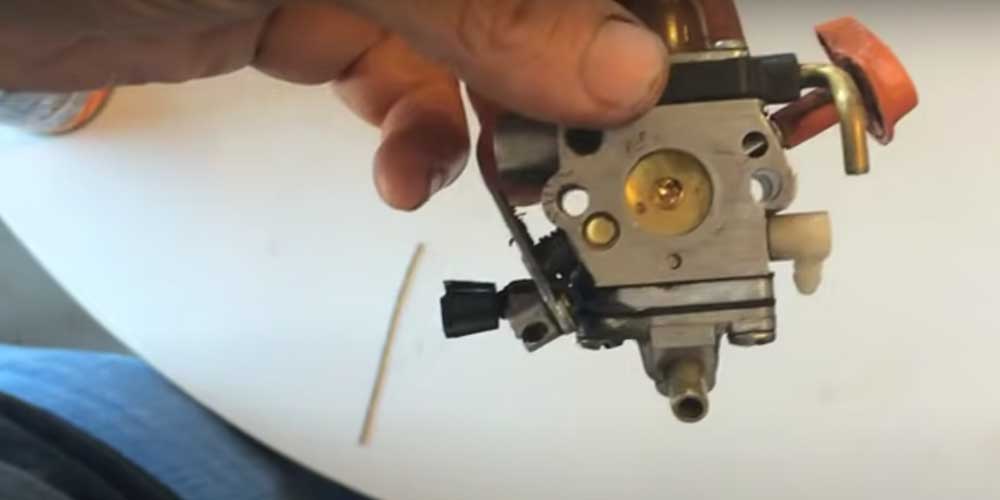Weed Eater Wont Start | Reasons and Troubleshooting Guide

Trimming your lawn can be a simple and easy job when you have the right equipment to do it well. When Weed Eater is your preferred product, you can pick between a gas or electric clipper or go for best commercial weed eater for cutting around poles and other objects.
Unfortunately, even a well-known weed trimmer brand can malfunction and be unable to start. Rather than getting frustrated when this happens, check your weed eater for some common problems that can keep it from working as it should. In this article, we’ll learn about why won’t my weed eater start, weed eater troubleshooting, and how to fix a weed eater that won’t start.
Why Your Weed Eater Won’t Start and How to Fix Them?
The new growing season is approaching, and frustration starts to mount when you notice the weed eater isn’t kicking in. There are many possible causes for your machine to fail. Therefore, before going to the nearest hardware store, we will list some common possible reasons. In addition to not starting after being stored for too long, a weed eater may suddenly stop working or refuse to start after a busy workday. Hence, these elements/tricks will save you time and money if you do them properly.
1. Gasoline Issues


A gas trimmer that won’t start could have a fuel-related problem. First, check if there is enough fuel to power the trimmer in its tank. If the fuel level is low, the lawnmower may not start. Fill the tank and try starting the lawnmower. However, if the fuel is still from last year, it should be replaced with new gasoline.
Ensure you have the correct blend of 2-stroke oil and gasoline for your Weed Eater trimmer. Weed Eater Companies recommends using unleaded gasoline mixed with 2-stroke oil in a ratio of 40 parts unleaded gasoline and 1 part 2-stroke oil.
Even today’s ethanol-containing gasoline can degrade in as minimum as one month. Commercially available premixed fuel that does not contain ethanol has a longer shelf life, has the correct fuel stability grade, and has a very precise diesel ratio. Homeowners sometimes store their trimmer in the garage at the end of the gardening season without stabilizing the gas.
Oxygen has all winter to decompose and spoil the gasoline, leaving you with a lawnmower that won’t start in the spring. If this is the case with your brushes, empty the old fuel from the fuel tank and replace it with new fuel. Using commercial premixed fuel eliminates all these problems.
2. Dirty / Blocked Air Filter


A clogged weed eater air filter prevents the engine from getting enough air to run properly. Before removing the air filter, brush debris around the filter cover and filter element. Compressed air also works well.
Be sure to direct the air through the filter from the inside to prevent dirt from getting deeper into the filter. Avoid washing paper filters as this may collapse their microbiological structure. However, the foam filter can be easily washed with mild detergent and warm water.
However, replacement is often the best course of action for spark plugs, especially if the filter is very dirty. Your engine may be trying to start and then suddenly stop. This is a sign of a clogged air filter, which means enough fuel is flowing through the engine, but a little air is passing through due to dirt and other debris in the air filter.
Remove the air filter of the weed eater and clean it with hot water before wringing it dry to solve this problem. If that doesn’t work, reinsert the air filter into the filter housing and try to start the engine.
3. Dirty Spark Plug


Another typical reason for your trimmer to stop operating is a faulty spark plug. To test this, try starting your engine and seeing whether it responds. If it entirely fails, the spark plug is more likely to be the source of the problem.
Start by looking for evidence of wear and tear on the spark plug. It may have a dirty or damaged spark plug when you try to start the Weed Eater trimmer. Cleaning the spark plugs with a wire brush to remove corrosion or dirt can help restore the connection to the normal operation of the trimmer.
Check the carbon or dirt accumulation, then test the spark plug using a spark plug tester to check whether it’s malfunctioning. If the spark plug is in excellent shape, clean it well with a brush; if it isn’t, replace it with a new one. Plugs aren’t expensive, so replace them. The actual placement of the spark plug varies depending on the appliance, although it’s normally on the motor’s side. Remove the spark plug and bring it to your local hardware shop for evaluation. Replace the old plug, reattach the rubber boot, and try again.
4. Faulty Ignition Coil


The ignition coil produces the powerful electrical current that fires the spark plug on a string trimmer. The gasoline in the cylinder gets ignited as a result. If your string trimmer’s ignition coil fails, it will slow down or cease operating entirely. However, determining if the coil is the source of your weed eater’s issues might be tricky.
While the weed eater engine operates, the ignition coil transfers current to the spark plug. The engine could not start if the ignition coil were faulty. Make sure the spark plug is operating correctly before replacing the ignition coil. Test the ignition coil using an ignition coil tester once you’ve established that the spark plug is operating properly.
The spark plug needs electricity to ignite and start the engine. Thus the ignition coil supplies it. If the spark plug cannot fire, the engine will not start. Check the continuity of your ignition coil with an ohmmeter after verifying that your spark plug is in excellent condition. If there is a break in the continuity, the ignition coil should be replaced.
5. Electrical Issues / Battery Malfunctions


A loss of load or a broken electrical component in a battery-powered lawn mower will prevent it from starting. When the Weed Eater electric trimmer doesn’t start, sometimes the most likely cause is the electrical issues. Check the electric trimmer to ensure that its extension cord is firmly inserted into the machine and plugged into the electrical outlet.
A faulty extension cord can also be a problem. A quick fix can be made by replacing the faulty extension cord with another that works well. Also, make sure the trimmer switch is in the “On” position. It’s convenient to perform a quick check of the fuse or circuit breaker controlling the outlet the Weed Eater is plugged into to make sure there’s no problem with the power supply.
6. Rusted / Malfunctioning Carburetor


Once gasoline breaks down, varnish, gum, and other debris can form inside the carburetor and clog the small fuel lines. Clogging prevents fuel from reaching the combustion chamber and igniting, leaving you with a weed eater that won’t start. The carburetor is an essential part of an engine, and when damaged, it can’t start your lawnmower at all. In most cases, the cause of a carburetor malfunction is when fuel is left in the lawnmower for too long.
Spray the carburetor cleaner into the intake after removing the air filter. Let’s see for a few minutes to help polish loose and dissolve. Replace the filter and try starting the lawnmower. If this process does not solve the problem, consider removing the carburetor for further cleaning. Be careful, however, as dismantling the carburetor marks a path of no return.
Figuring out how the delicate joints, small screws, and needle valves fit together can be a challenge, even on a relatively simple trimmer carburetor. Take pictures with your phone during the process for easier reassembly. Carburetor cleaning should be used to clean all of the apertures and channels. If you’re hesitant to disassemble the carburetor, take it to a service center.
7. Flooded Engine
Sometimes the engine refuses to start, and the typical response is to try to start the weed eater engine too many times. Therefore, you will get a flooded weed eater engine that you cannot start. You can work around this by putting the lever on your device “running” and pulling the cord. This way, you will get rid of excess fuel. Repeat the process if necessary.
Wear safety glasses to prevent fuel from contacting your eyes when using weed eaters. Barrier-free weed eaters should be placed on a flat surface. Don’t let any obstacles get in your way. You can let the engine cool down a bit. The spark plug must be loosened with the adjusting wrench and turned counter-clockwise.
You can try opening the hood while letting the excess fuel evaporate, as this will solve the flooding problem. Restart your vehicle with the gas pedal after about 20 minutes. Check your spark plugs to see if you still can’t get your computer to work.
Tip:-
- Start the hot engine on the Weed Eater without throttling to avoid flooding the carburetor.
- Signs of a flooded engine are a strong smell of gasoline and no spark plugs.
Summing up
Finally, I want to tell you one more thing. If you want to use your weed eater well, you need to place the choke in the proper position and pull the starter cord no more than six times.
If you want your machine to run smoothly, you should clean and prepare it before storing it at the end of the mowing. Properly clean your weed eaters and find a convenient, dry place to put them for your next use. This way, you will use your small machine for a long time without worrying too much. Enjoy the coming spring! So I hope you cleared all your doubts and concerns regarding why won’t my weed eater start, how to identify it and how to fix them.






